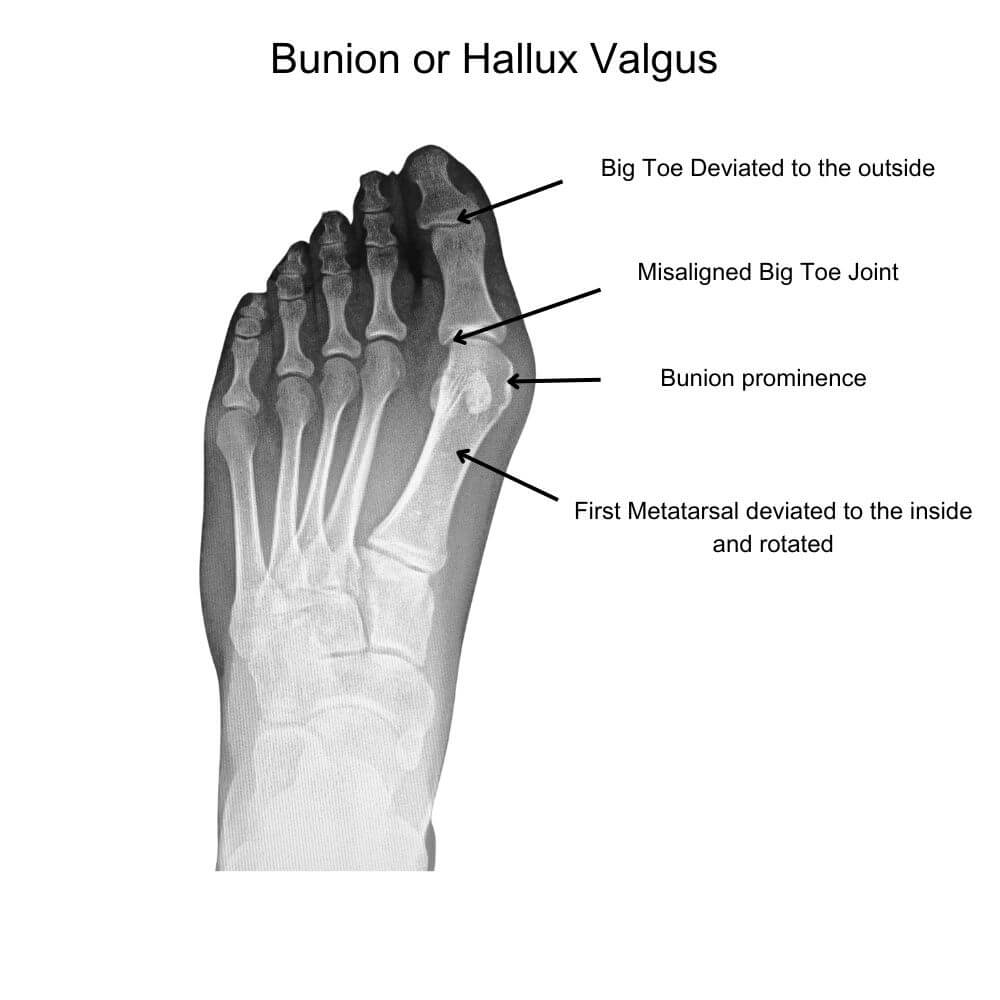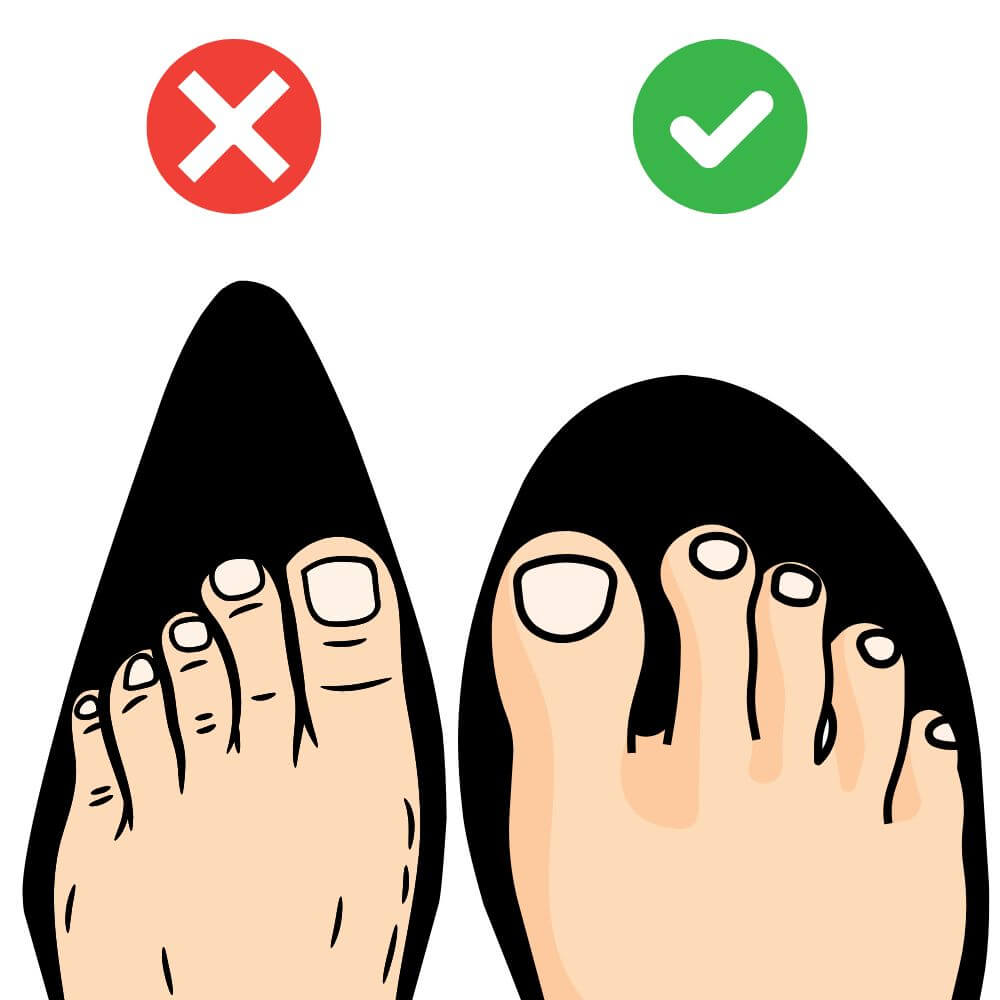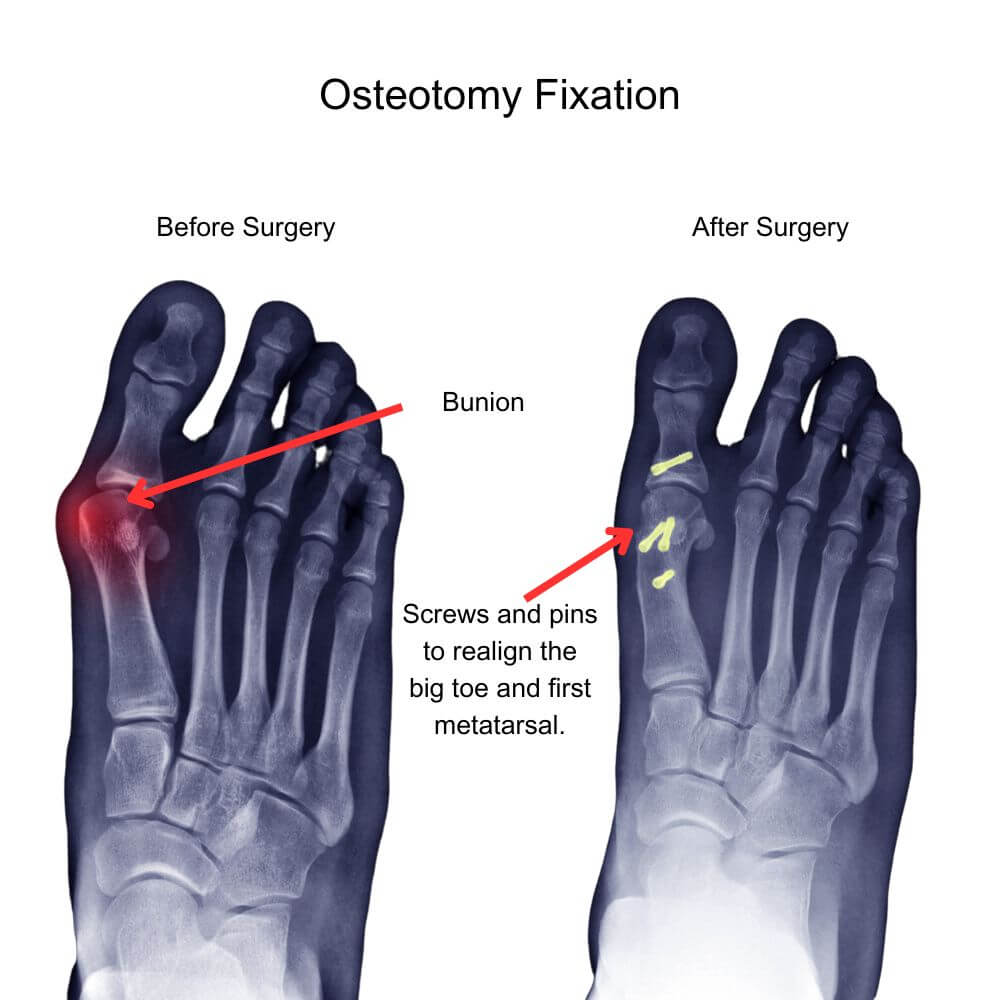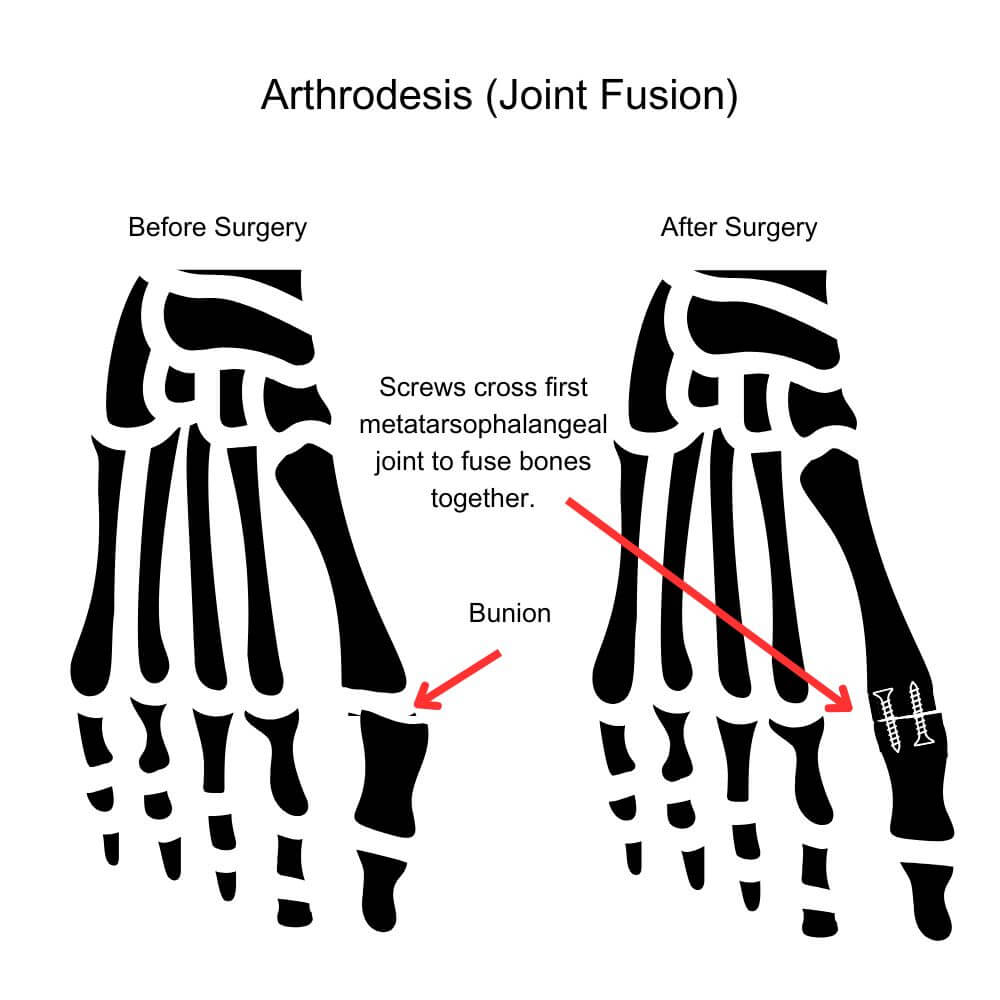free shipping desktop
Can You Wear Shoes After Bunion Surgery?

According to a 2023 study in The Journal of Foot & Ankle Surgery, over 350,000 bunion surgeries are performed annually in the United States, making it one of the most common elective foot surgeries. Fortunately, the vast majority of patients experience positive surgical outcomes from their bunion surgery, with reduced pain and improved function.
However, many people don’t know what to expect after their bunion surgery. Some common questions include: ‘Will I be able to walk right after surgery?’, ‘Can I ever wear my favorite pair of shoes again?’, and ‘How can I make sure my bunion doesn’t come back?’
We will discuss the answers to these questions and more to make sure you’re informed, prepared, and confident going into bunion surgery for you or someone you know.
How do bunions form?
Bunions are bony bumps that develop on the joint at the base of the big toe. Their medical name is hallux valgus. “Hallux” is derived from Latin, where it means “great toe.” “Valgus” is a medical term that refers to a body part that deviates away from the midline of the body. A simple comparison to make this easier to visualize is that a person who is ‘knock kneed’ is classified in the medical world as someone with knee valgus (or ‘genu valgum’ to be more specific).
Bunions can occur due to a few different causes but always result in the joint that connects the first metatarsal (the long bone on the inner part of the forefoot) to the big toe protruding from its normal anatomical position. This typically results in the big toe angling towards or across the second toe, depending on the severity.

One of the most common causes of bunions is thought to be genetic. People with a family history of bunions are significantly more likely to develop bunions themselves. Additionally, people with flat feet (pes planus) have an increased risk of bunion development due to the altered anatomical structure and biomechanics of their feet.
Repetitive restriction or stress of the foot preventing proper foot alignment and splaying can increase the risk of developing bunions as well. This may include frequently wearing footwear that is tight, narrow, or otherwise restrictive of normal biomechanical movement. Shoes with a narrow toe box, especially high heels, can squeeze the toes together putting consistent and repetitive pressure on the first metatarsophalangeal joint, which transmits a high percentage of our body weight with each step. As time goes on, this can lead to joint injury, malalignment, and the development of a bunion.

Certain medical conditions and injuries may also increase the likelihood of developing bunions. Arthritis (both osteo- and rheumatoid arthritis) are known to be common culprits. Severe injuries that significantly change the structure and alignment of the foot may also increase the incidence of bunions.
Any of these factors, particularly if there is a combination of more than one of them, increases the risk of developing hallux valgus considerably. While mild to moderate bunions can often be managed conservatively, severe cases may require surgical intervention to correct the problem, relieve pain, and restore function.
What types of procedures exist to get rid of bunions?
If your foot surgeon deems your bunion severe enough to require surgery, the way that surgery is performed will depend on the cause, severity, and contributing factors of your condition. Regardless of which option is chosen, surgical outcomes following bunion removal and correction are quite good.
The surgical procedure to remove a bunion is known as a bunionectomy. A bunionectomy can be performed with four basic approaches, though there are slight variations of each.
The most common approach is known as an osteotomy. With advances in surgical techniques and technology, this approach is often minimally invasive and features relatively short recovery times. The surgeon will realign your big toe and the first metatarsal and use screws and pins to stabilize the alignment. This approach is used in many cases where the joint surfaces at the base of the big toe are healthy enough not to require a fusion of the joint.

A joint fusion, also known as arthrodesis, is used in cases where the bunion is caused by severe degenerative (arthritic) changes. The joint surfaces with the degeneration are shaved off and the joint is realigned with congruency of the metatarsal and big toe and held together with screws. As the bones heal, they will fuse together. As you may have guessed, this will affect the way the foot moves, as the joint that was fused will no longer be able to flex and extend as it normally does. Although this changes gait mechanics, it significantly reduces the pain associated with the severe arthritis these patients were facing previously.

Other techniques include a Lapidus procedure, where the realignment of the foot is performed where the metatarsal meets the smaller bones in the midfoot (tarsals). For less severe conditions, an exostectomy may be an option, which involves shaving off the bunion. However, this is often paired with the osteotomy technique described above, as there are fewer instances where an exostectomy alone is the best option for patients requiring surgical intervention.
Can I go back to wearing my favorite shoes after my bunion is removed?
People who have a bunionectomy often wonder what it will mean for their footwear options both in the immediate and distant future. As with most things in the medical field, the answer depends on several factors.
Depending on the type of bunionectomy performed and the surgeon’s specific protocol, some people may be able to place weight through their foot immediately after surgery while others may only be allowed to place some or no weight through their foot. In nearly all cases, a protective post-surgical shoe, boot, and/or splint will be prescribed by your surgeon for a certain time, as well as a surgical wrapping/dressing. These measures are used to protect the surgical site and promote proper healing.
Some surgeons, based on the surgical techniques they performed, may require you to stay in a protective shoe/boot for up to 20 weeks (though it is typically much less), while others may allow you to transition to casual footwear as early as a couple weeks after surgery.
Timeline for Returning to Regular Footwear
After bunion surgery, the timeline for transitioning back to regular footwear varies based on the type of surgery performed, the surgeon’s protocol, and individual healing rates. Here’s a general week-by-week breakdown:
- Week 1-2: After surgery, most patients are required to wear a protective post-surgical shoe or boot. Weight-bearing may be restricted or limited to the heel and midfoot, as directed by your surgeon. Swelling and discomfort are common, and the focus is on wound care and minimizing movement of the surgical site.
- Week 3-6: Patients often continue wearing a post-surgical shoe or boot. Limited weight-bearing may be allowed, depending on the procedure performed. During this phase, your surgeon may permit light activity and basic foot exercises to aid healing. Swelling may still be present, so loose, breathable footwear with a wide toe box is ideal if transitioning out of the post-surgical boot.
- Week 7-12: Most individuals start transitioning to supportive casual shoes, such as sneakers with arch support and a wide toe box. It is usually recommended to avoid high-impact activities like running or jumping during this time period. Physical therapy may be introduced to regain strength and mobility.
- Week 13-20+: By this stage, many patients can wear their normal footwear, as long as it’s comfortable and supportive. High heels, narrow toe boxes, or stiff, unsupportive shoes should still be avoided to prevent strain on the healing joint. Swelling may persist for several months, so flexible footwear options are key.
Always consult your surgeon or physical therapist for guidance tailored to your recovery timeline.
Shoes to Wear (And Avoid) Post-Bunion Surgery
In general, individuals who undergo bunion surgery will be able to return to wearing the shoes they enjoy. However, shoes with very narrow toe boxes and shoes that cause significant stress through the first metatarsophalangeal joint (such as high heels) will likely not be comfortable to wear and should really be worn very minimally going forward. For those with a joint fusion bunionectomy, this type of footwear may not even be possible since, depending on the height of the heel, they will no longer have the adequate range of motion necessary.
The use of well-cushioned shoes with proper arch support and a wide toe box is generally recommended for the long-term by physicians and physical therapists following bunion surgery. A wide toe box is crucial for normal foot splaying while you stand and walk, as well as for the prevention of excess valgus stress at the repaired joint, preventing future issues of similar or higher magnitude as the original bunion.
Proper arch support for your foot anatomy is necessary for optimal weight distribution through the gait cycle. Additionally, a cushioned insole will provide shock absorption through the metatarsal heads, particularly through the first metatarsal, where the surgery was performed. Both features are particularly necessary after bunion surgery to ensure excess stress is not being directed through the repaired joint. If custom orthotics are needed, a shoe with a removable footbed to accommodate the prescribed orthotics is best. Your physician and physical therapist will be able to provide you with individualized recommendations based on your foot anatomy and the type of bunionectomy you had.
About author:
Troy Hurst, PT, DPT, is a licensed physical therapist who received his Doctor of Physical Therapy degree from Carroll University in 2017. He specializes in the treatment of orthopedic and vestibular conditions, and has been a freelance medical writer since 2018.

